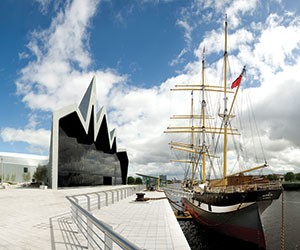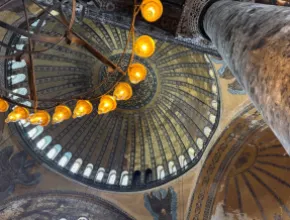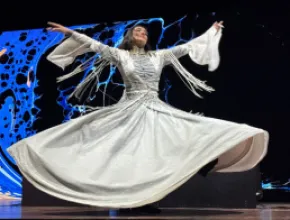Invention is a true Scottish byword. From the television and the telephone to macadam (asphalt) and the inflatable tire, Scottish brains have revolutionized the world time and again, including other breakthroughs that include penicillin and radar. Great minds are also behind Scotland’s MICE industry, as evidenced by the continuing success of the Winning Years campaign.
Part of Scotland’s national “Perfect Stage” strategy for attracting and hosting events up to 2020, the Winning Years is a model MICE brand-building initiative, which continues to produce bonnie returns.
Starting with the Year of Food and Drink in 2010, which was initiated following the success of 2009’s inaugural “Homecoming” celebration, Scotland’s leading events, tourism and governmental bodies have partnered with myriad local suppliers around the nation to create a running series of themed years highlighting and promoting Scotland’s rich bevy of assets.
“Showcasing our evolution as a destination for the last seven years has helped solidify our presence in the North American business tourism market,” says Richard Knight, director of marketing, the Americas, for VisitScotland’s Business Tourism Unit.
“Going from strength to strength over the past five years, the volume and value of North American business tourism in Scotland is exceeding the pre-economic crash levels of 2007,” Knight continues. “The themed years’ platform presents Scotland as a culturally rich destination that is evolving to meet the needs of today’s meeting and event planners. It also provides a common message and opportunity for collaboration across the entire Scottish industry.”
As Scotland concludes its second successful Year of Food and Drink in 2015, the stage is set for the Year of Innovation, Architecture and Design in 2016. Ahead of this showcase of the science, technology and architectural innovations that are making Scotland a sustainable meeting destination for years to come, here are some illustrative examples, both past and present, of Scottish skill in staging meetings of the minds.
Museum Might
Inaugurated in 1866, the National Museum of Scotland in central Edinburgh is celebrating its 150th anniversary in 2016 by opening 10 galleries showcasing Scotland’s internationally important contributions to decorative art, design, fashion, science and technology. Combining the collections of the former National Museum of Antiquities of Scotland, and the former Royal Scottish Museum, this celebrated institution comprises two adjoined buildings, one modern and one historic, and belongs to the four-member National Museums Scotland.
All admission-free and all offering stellar spaces for private events, the quartet also includes the National War Museum within Edinburgh Castle, National Museum of Flight east of Edinburgh and National Museum of Rural Life near Glasgow.
Designed by world-renowned architect Zaha Hadid, Glasgow’s stunning Riverside Museum, opened in 2011, won European Museum of the Year honors in 2013. The iconic building houses more than 3,000 exhibits in over 150 interactive ‘story displays’ depicting Glasgow’s maritime powerhouse era and daily Glaswegian life in the early to mid-20th century. Groups can also venture aboard the Tall Ship at Riverside’s restored Glenlee, the U.K.’s only floating Clyde-built sailing ship, berthed alongside the museum.
As construction proceeds on the $122 million V&A Museum of Design in Dundee, this highly anticipated venue is offering an advance preview of its architecture and the developing Dundee waterfront via a film display at London’s Victoria and Albert Museum, through spring 2016.
Centers of Inspiration
Since opening in 1995, the Edinburgh International Conference Centre (EICC) has welcomed over a million delegates to more than 2,500 events, generating some $600 million in economic impact. With its innovative movable floor system and highly versatile spaces adaptable to host 2,000-plus delegates, the multilevel EICC has established a loyal following in its decade of service, with a 66 percent client return rate affirming its role in bolstering Edinburgh’s MICE appeal.
Not to be confused with Edinburgh’s ancient Parliament House, the modern Scottish Parliament building, located at the foot of Edinburgh’s famous Royal Mile, is a modern facility that stirred a wee bit of controversy when it opened in 2004.
Decried by many for its location, design and cost, the project had just as many fans, including the Royal Institute of British Architects, which recognized the building with the prestigious Stirling Prize in 2005. There’s little dispute, however, that the Main Hall, featuring three tapered concrete vaults, is a winning choice for large-scale evening events. Another option for evening hire, along with daytime meetings, is the Members’ Room. Guided building tours are also available.
Glasgow, which has emerged as Scotland’s cultural and commercial capital, has an all-star roster of venues including the Scottish Exhibition and Conference Centre (SECC). One of the U.K.’s largest integrated exhibition, conference and concert facilities, SECC can flexibly accommodate up to 10,000 delegates in spaces including the iconic Clyde Auditorium. Also on the campus is the 13,000-seat SSE Hydro, consistently ranked by Pollstar as of the world’s top three best-performing arenas.
Showcased during the 2014 Commonwealth Games, Glasgow’s $173 million Emirates Arena is one of Europe’s most versatile and innovative venues. Both an international sporting venue and first-class conference facility, the arena comes with free Wi-Fi and parking, as well as signature meeting rooms such as the 200-seat Function Suite, which overlooks the sports arena and velodrome.
Opened this year, the new multimillion-pound University of Strathclyde’s Technology and Innovation Centre is a dynamic addition to central Glasgow’s venue portfolio. Purpose-designed to synergize with Glasgow’s strategic focus of attracting meetings in sectors including energy, manufacturing, health and the development of future cities, the research-centric building offers versatile space for up to 400 conferees.
Formerly housing The Glasgow Herald, The Lighthouse was the first public commission for Glasgow’s celebrated Art Nouveau artist and architect Charles Rennie Mackintosh, completed in 1895. Today, this striking beacon just off Style Mile serves as Scotland’s Centre for Design and Architecture, featuring regular exhibitions and hosting up to 150 people for events.
Groups traveling between Edinburgh and Glasgow will find artful inspiration in Falkirk, where the Kelpies are the world’s largest horse head sculptures.
Historic Appointments
Established in 1670 as Scotland’s first physic (medicinal) garden, Royal Botanic Garden Edinburgh is distinguished today both as the world’s second oldest botanical garden and a globally renowned center of plant research and habitat preservation.
One of the city’s most popular attractions, this 70-acre heirloom features several inspirational venues for groups. Set within the biodiversity garden, the John Hope Gateway was voted Scotland’s most sustainable building in 2011 and offers scenic ground-floor, restaurant and outdoor event space. Other breathtaking spaces include the adjacent David Douglas Room and historic Caledonian Hall, formerly a herbarium. There’s also Inverleith Lawn, for tented outdoor events of up to 1,000 guests.
East of Inverness, the past meets the future at the Culloden Battlefield’s award-winning new Visitor Centre. Fought in 1746, this short but bloody battle pitched Bonnie Prince Charlie’s Highlanders against George II’s Royal Troops in the final confrontation of the Jacobite rebellion of 1745. The new facility offers dramatic interactive experiences that include an immersive 360-degree film that puts visitors in the heart of the action. The multifunctional space can also be configured for meetings or social events.
Built in the aftermath of the Battle of Culloden, Fort George is among Europe’s most sophisticated fortifications. Featuring advanced engineering and design elements, the still-active fort, which took 21 years to build, is used for small and large events and features the Highlanders Museum, with event space for up to 80 guests.
Also in Inverness, Eden Court is one of Scotland’s more intriguing venues. Opened in 1976 as the Lower Highlands’ only such large-scale performance facility at the time, the theater stood out both for its striking design and its location on grounds once inhabited by 19th century bishops. The official residence of one Bishop Robert Eden was converted into dressing rooms, offices and a cinema, and integrated into the complex as the Bishop’s Palace.
Today, Eden Court offers flexible, state-of-the-art space for up 1,500 delegates, including the 840-seat main theater and a smaller 250-seat theater that converts to a flat-floor venue for functions and events.







